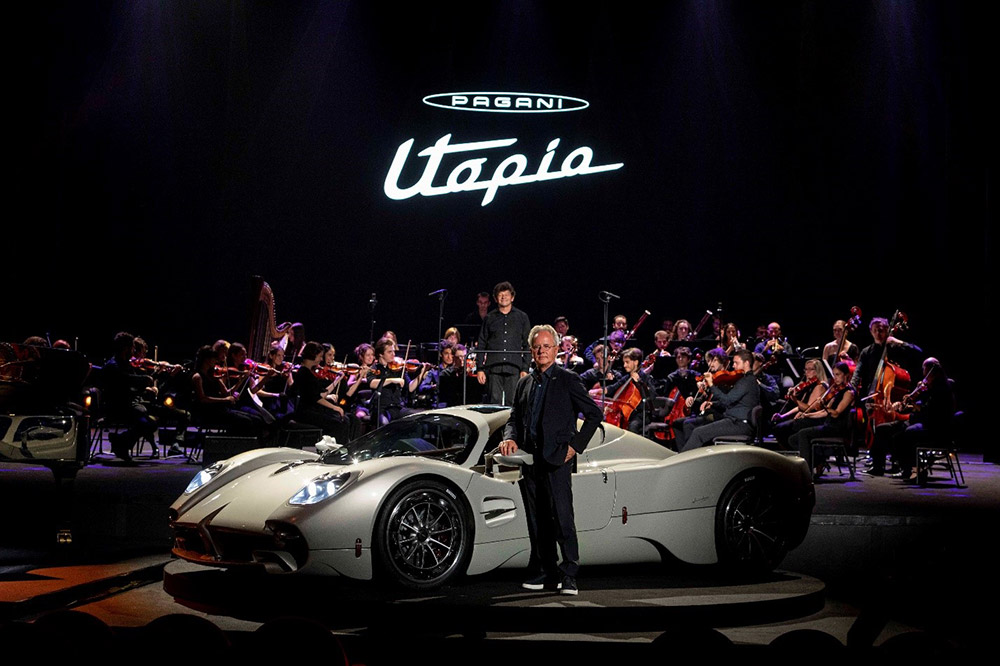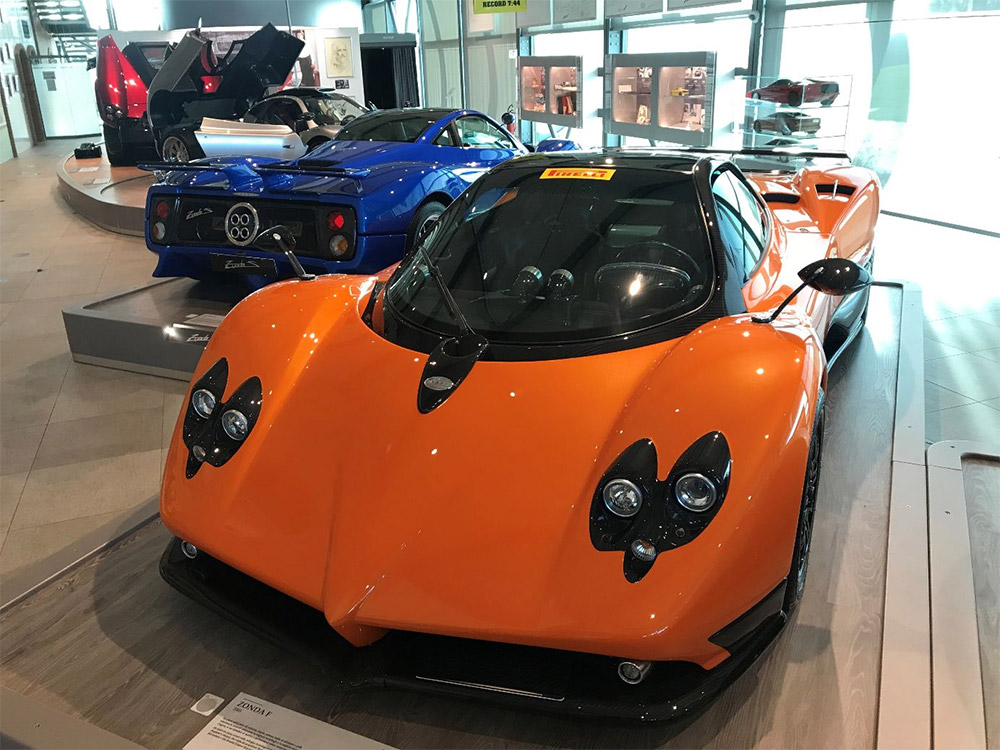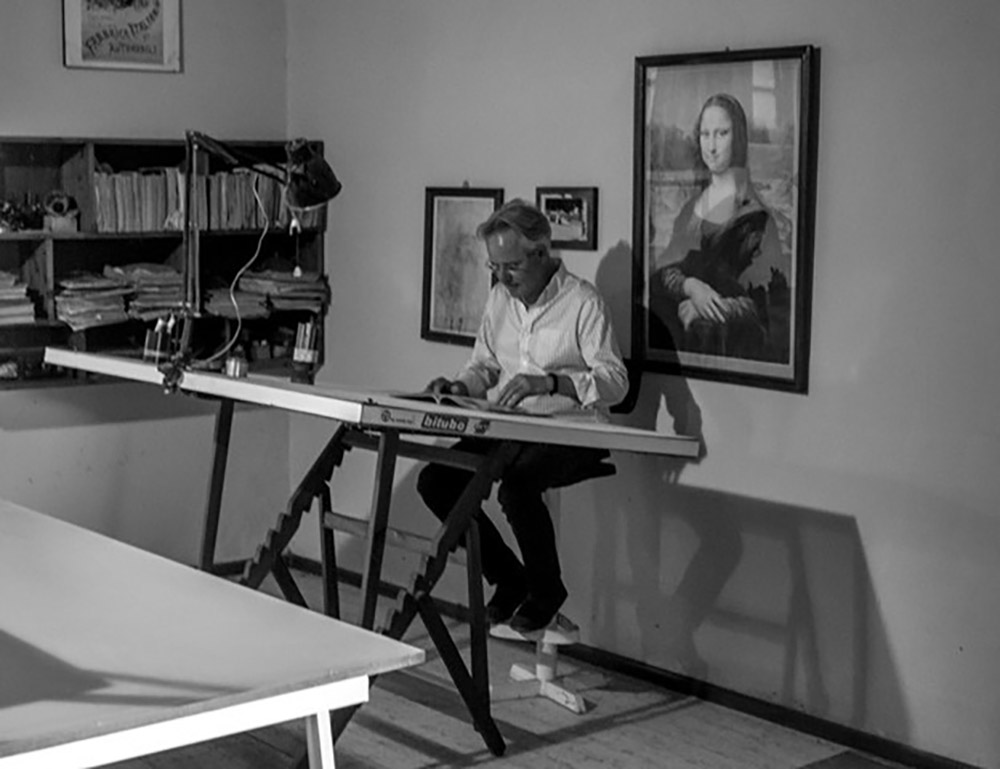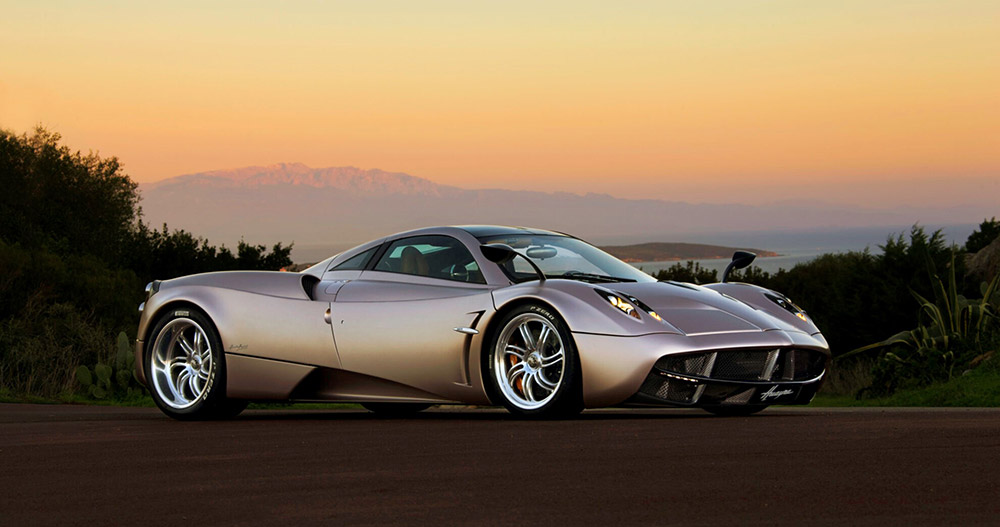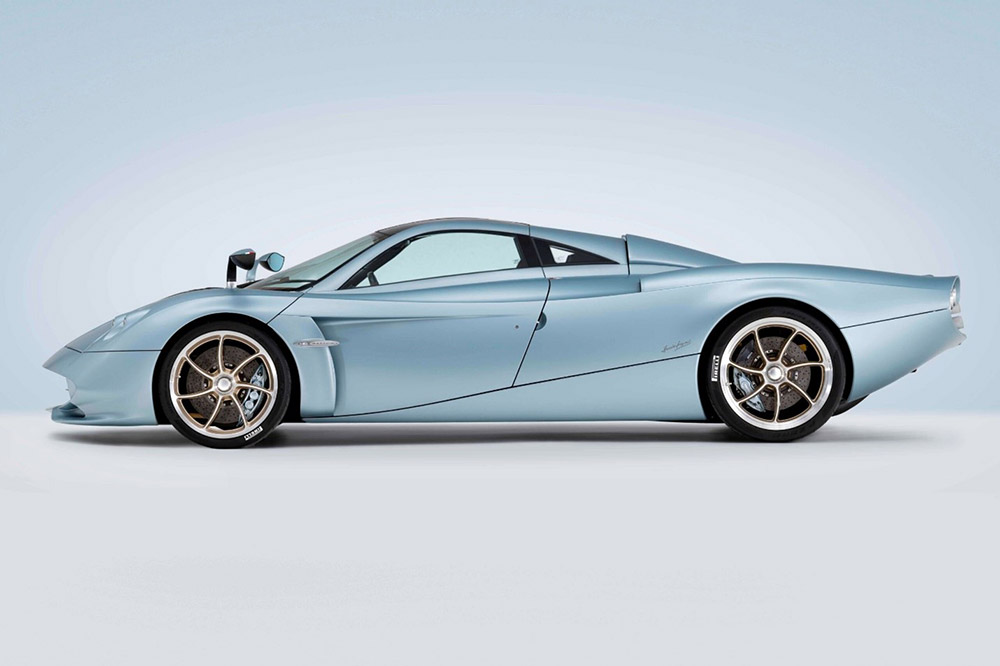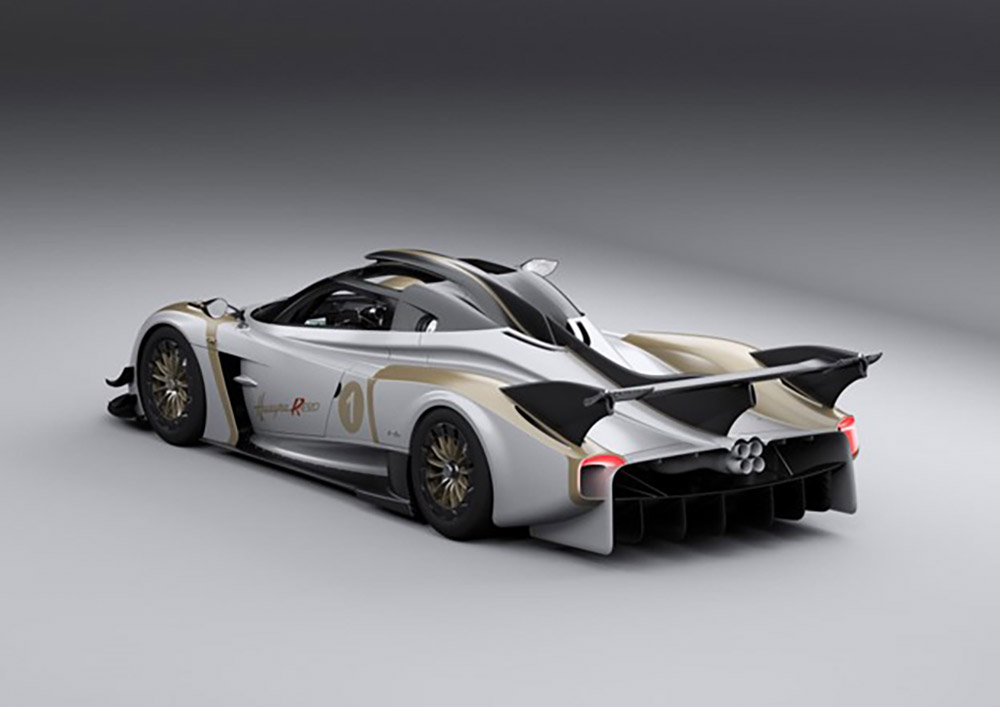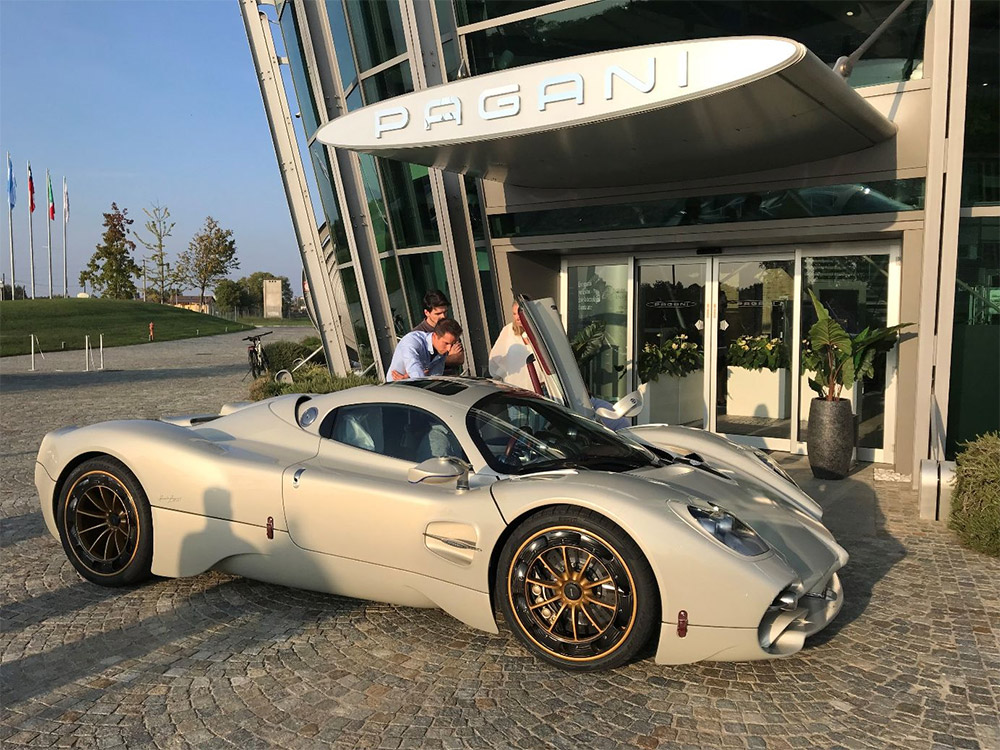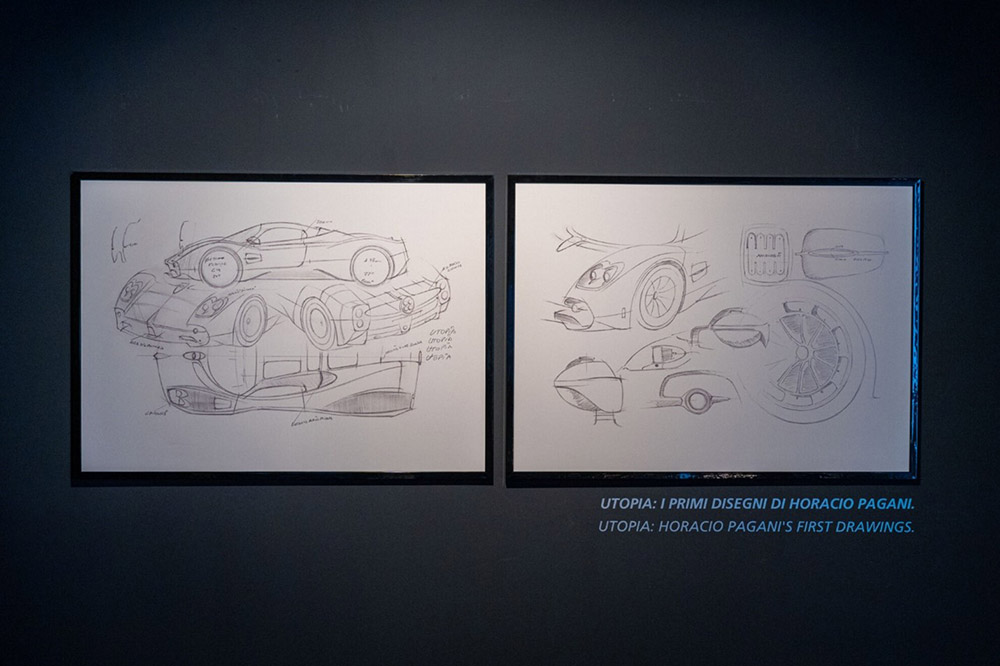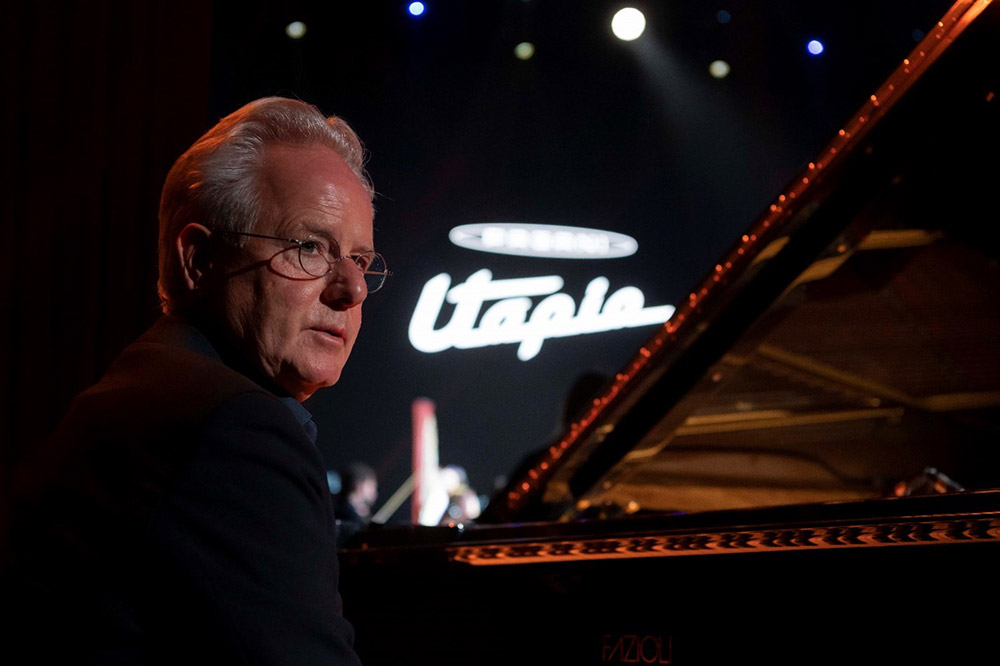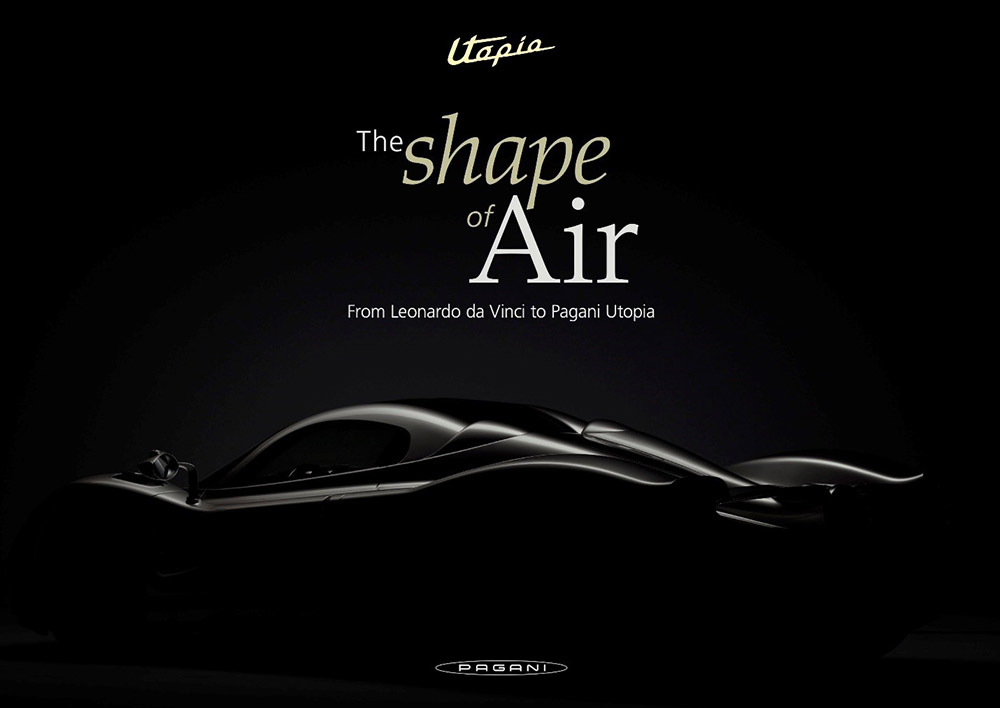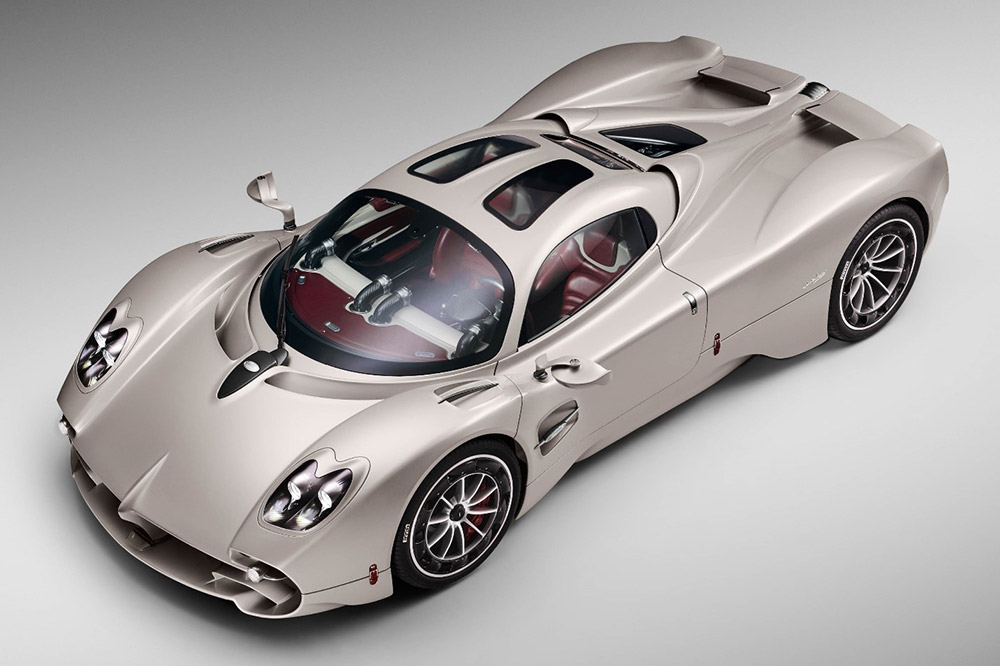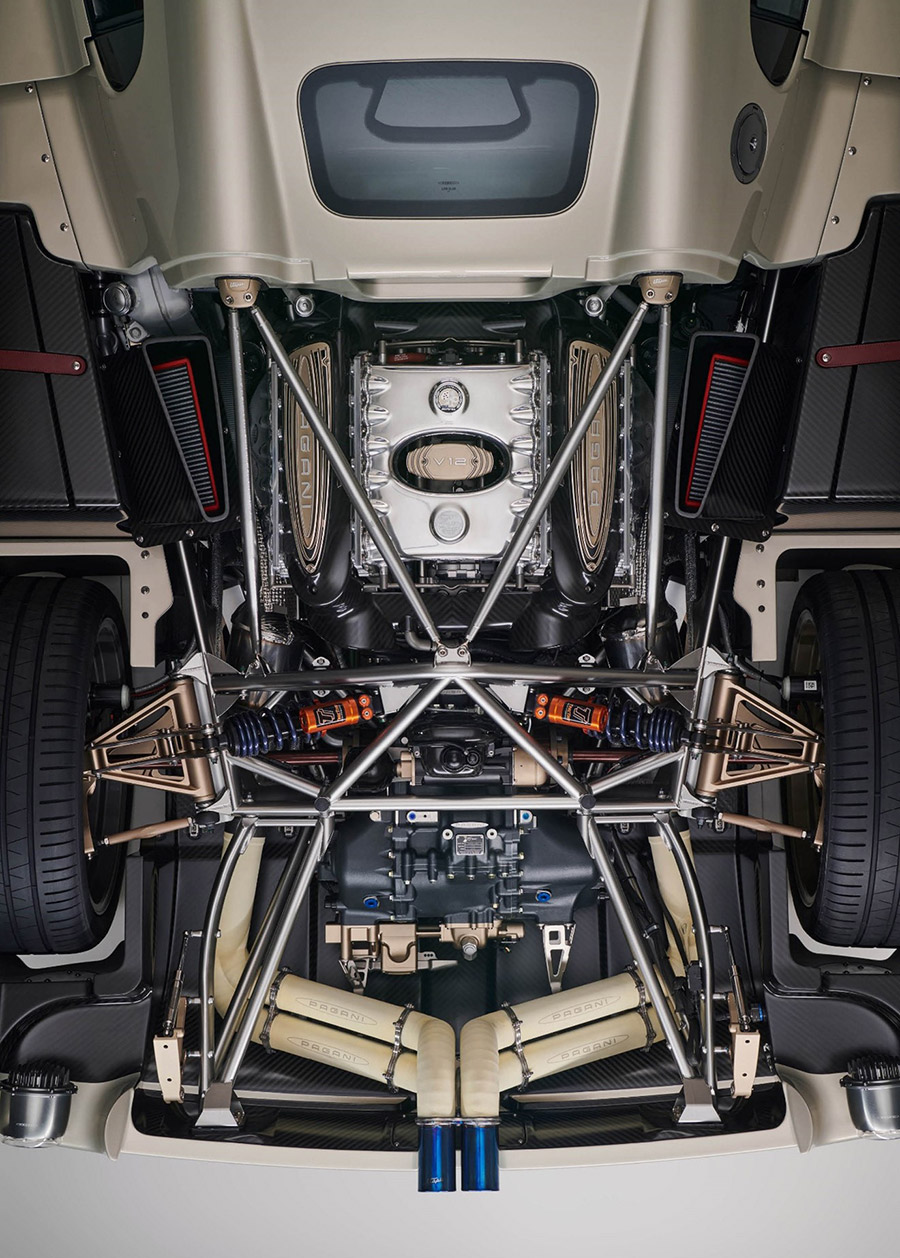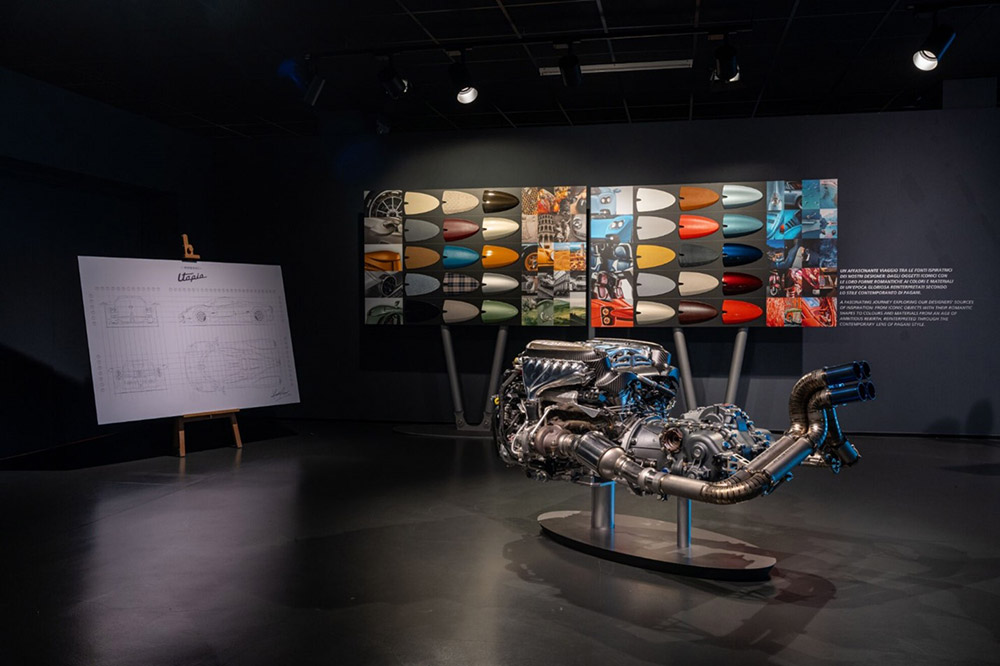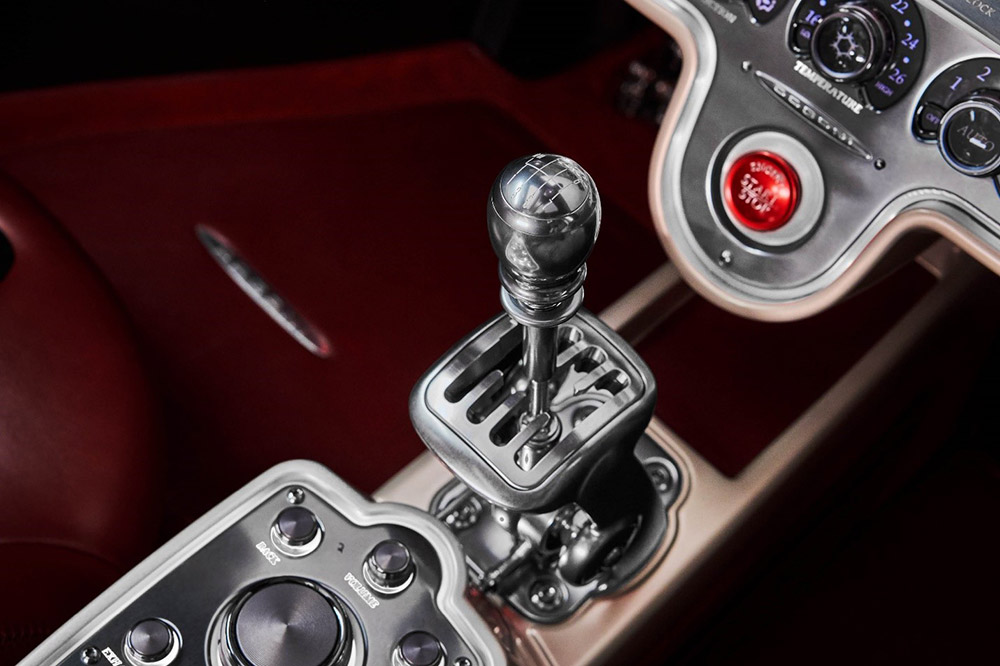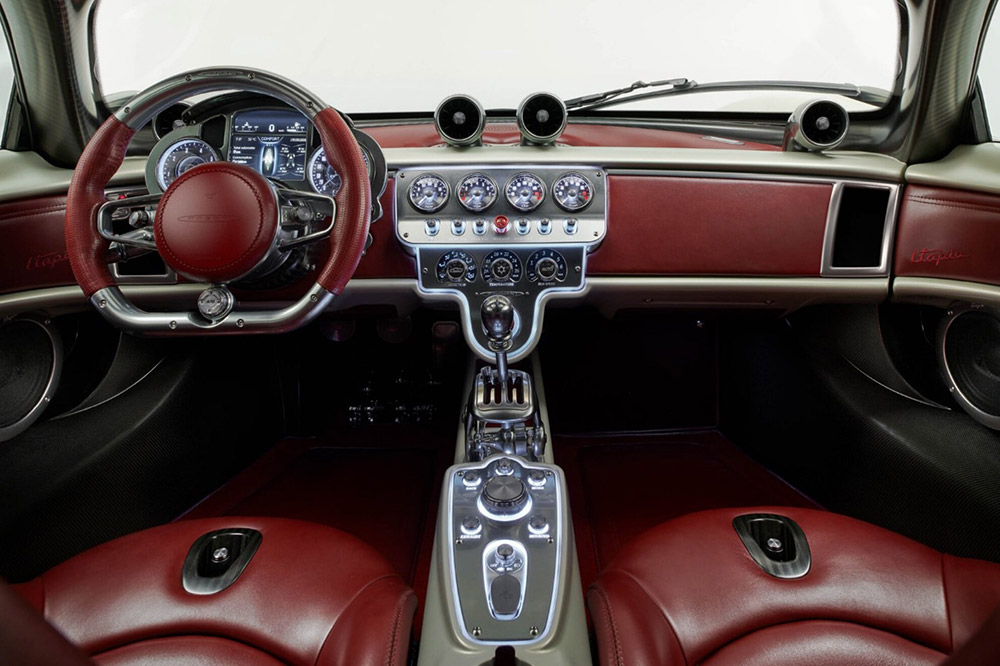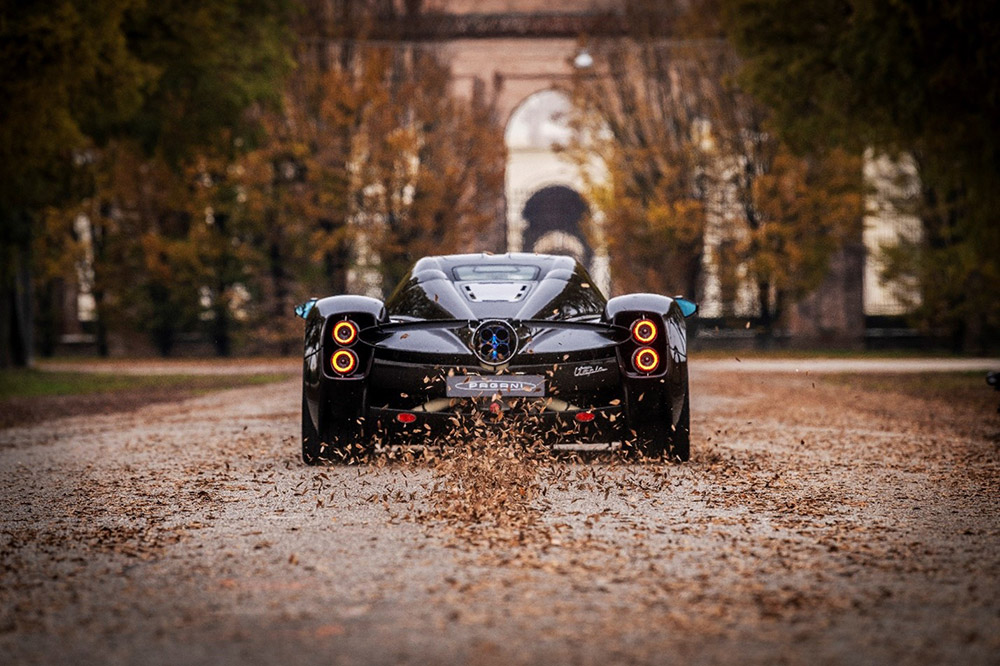Launching a new car manufacturer is incredibly difficult and many do not survive for a second act, let alone a third. The Utopia follows the Zonda and Huayra as the latest chapter in the Pagani story. Pagani has not only shown its staying power but continues to deliver new expressions of rolling art for a dedicated customer base.
It takes a blend of confidence and humility to name a car after an ideal that does not exist. The laws of physics remain immutable but the Pagani’s artistic and engineering flair tests and teases the limits of what is possible when money is not the primary design constraint.
Speed Journal Principal Jeff Francis spoke with Pagani founder and namesake Horacio Pagani at the Grand Hotel des Bains Kempinski during a visit to snowy St. Moritz for the 2024 International Concours of Elegance (I.C.E.) concours and driving event. The wide-ranging discussion touched on the Utopia’s design, development, and vision. Utopia production and customer deliveries are underway, so it was a good time to reflect.
In October 2022, The Speed Journal visited the Pagani factory, located in Italy’s Emilia-Romagna region. The museum included a collection of Pagani automobiles as well as history from Horacio Pagani’s days prior to founding the firm. In musical or theater terms, everything prior was significant, but also a prelude or an opening act before the main event when Pagani became a constructor.
The Zonda automotive timeline included a 1998 development protype, a 2000 S model with a fully visible carbon fiber body, a no-compromises 2005 F model, an open-top 2010 Cinque roadster, a race-focused 2020 Imola, and the one-off 2020 Barchetta.
The Zonda’s debut at Geneva in 1999 introduced Mr. Pagani and the Pagani way to the world. Design intention infused into every detail showed a new path in a world of supercars. While Mr. Pagani sharpened his skills and developed his career amongst well-known Italian marques, his roots in Argentina and connection with Mercedes via Juan Manuel Fangio paved a unique path of uncommon origins. Being able to translate ideas into over a hundred production cars demonstrated corporate viability beyond the small batch business that often plagues new constructors.
Following the Zonda with a second act was a tall order, but the Huayra emerged in 2011. The Zonda was known in development as C8 and the Huayra was developed as C9. The all-new car was unquestionably a Pagani. The cluster of exhaust pipes at the rear and Mercedes AMG power remained, but the Huayra introduced a design language with more sculpted curves than its predecessor.
Mr. Pagani recalled taking significant time in the Huayra’s development to address both aerodynamics and aesthetics. He remembered the team successfully completing the aerodynamic tests but being unconvinced about some of the resulting styling elements. The team went back to work and spent another three or four months improving the styling elements to make them more beautiful while meeting the car’s aerodynamic needs.
Roadsters and hard-core track variants extended the lives of both the Zonda and Huayra. Close collaboration with customers became a hallmark of making each car special. Customers with unique visions and resources to work with Pagani to create even more bespoke variants and evolutions. But the next generation was taking form on the sketchpads of Mr. Pagani and his design team…
The timing of the 2022 museum visit was fortuitous for other reasons. A pearlescent white pre-production Utopia was parked outside the front door just over five weeks after its debut in Milan.
The Utopia grew and came to life at Pagani’s facility over the course of 6 years. The details took thousands of drawings, ten 1:5 scale models and two full scale models. Input from customers steered and validated the vision. Codenamed C10 for development, the Utopia was formally unveiled in September 2022 in Milan. As with the transition from Zonda to Huayra, the transition from Huayra to Utopia carries distinctive Pagani themes while charting a new course. The bodywork is taut and incorporates ducts and curves to steer air into its shape. There are no extraneous flicks and wings. The shape started with pen and paper but was refined in the wind tunnel.
Mr. Pagani explained that the company’s research and development center is known as the Art & Science research center. Designers and engineers work together rather than separating into different units. The technical area is all about design. There are 60 people in the Art & Science research center with 10 to 12 people focusing on design. All designers have been trained exclusively at Pagani. There are no designers that came from other constructors. They are remarkably young, graduating from school and going directly to Pagani for on-the-job training. Full immersion in Pagani’s approach starts at the very beginning of their professional journey.
The Milan unveiling of the Utopia took place in a theater with Mr. Pagani playing the piano before passing musical duties to a symphony. The launch event began a world tour for the Utopia. Pagani has shown the car at Pebble Beach, the Goodwood Festival of Speed, and closer to home at the Modena Motor Valley Fest. Pagani took a Utopia and Zonda to St. Moritz for the 2024 I.C.E. event. The duo posed for photos on set-up day before heavy snows forced cancellation of the weekend schedule of concours and driving on the ice.
The Utopia also found its way to the Far East. An exhibition titled “The Shape of Air: from Leonardo da Vinci to Pagani Utopia” in March and February 2024 at the Shanghai Museum blends the modern and classic. Mr. Pagani credits da Vinci for the design philosophy that combines design and engineering. Five centuries ago, da Vinci said that art and science can walk together, hand in hand. This, combined with the desire to please and delight clients, is the seed from which the Pagani ethos grows and blooms.
At the Milan launch, Pagani promised first deliveries within 12 months. True to their word, deliveries started in August 2023. By March 2024, all cars with sequential transmissions were built and work moved to production of the manual transmission variants. Over sixty percent of buyers ordered their cars with the manual gearbox, a sure sign that the manuals are alive and well. Pagani expects production to run through the second or third quarter of 2025. All units are sold.
Pagani cars have broken through the boring hypercar questions of “how much” and “how fast.” The price tag funds the uncompromised design and engineering process. They are fast but the point is more about the experience than the speedometer digits. Design and precise manufacturing are visible but Pagani continues its tradition of composite expertise by developing its own materials for use in the monocoque chassis. Titanium is an unseen contributor that saves weight and adds strength. Utopia means searching and striving and developing every detail.
A V12 Mercedes AMG engine has been in every Pagani since inception. The Utopia continues that trend and the company intends to continue with V12 power as long as possible. The Utopia engine is not the same powerplant from the Huayra. Mercedes AMG developed a new twin turbocharged V12 exclusively for Pagani. It makes 864 HP with maximum torque of 1100 Nm. Three vehicle prototypes spent two years dedicated to engine development.
The labor paid off in ways beyond pure power. Mr. Pagani explained that the new V12 complies with global emission standards norms until 2027, including the strict Californian regulations. Owners can opt for a 7-speed single-clutch automatic transmission or a 7-speed manual gearbox. The manual transmission alternative was crucial. The mechanical elements of the beautiful gated gearshift are fully visible. The movement is tactile and makes different sounds than electro-hydraulic paddles on a steering wheel would make. A cable directly connects the gearshift to the gearbox at the rear of the car. The amount of engineering required to marry the logistics with the aesthetics was substantial.
The decision to forgo complex hybrid powertrains and electronics is intentional. Electronics add weight which changes the driving experience and interferes with the human factor.
Could the purest driving experience be a beautiful lightweight car fitted with a V12 engine and manual gearbox? Such a simple formula is extremely rare but some might call it Utopia.
The Speed Journal would like to thank Horacio Pagani, Sebastian Berridi, and the Pagani team for arranging the conversation. Special thanks also go to the Grand Hotel des Bains Kempinski in St. Moritz for providing the venue. Click here to read more from the conversation that touched on many topics other than the Utopia.



